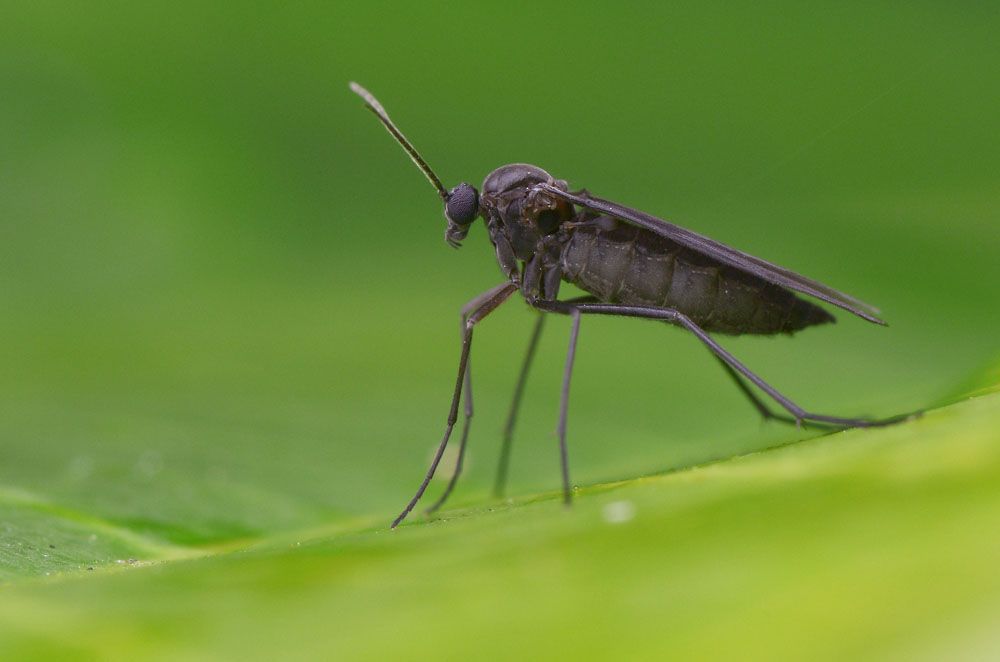
Fungus Gnats – Bradysia spp. – Lycoriella spp.
Fungus Gnats (Bradysia spp., Lycoriella spp.)
Common Name: Fungus Gnats
Latin Name: Bradysia spp., Lycoriella spp.)
Appearance:
- Adults are little grayish-black flies (about 1/8 inch long) with long legs and translucent wings. They are little flyers that emerge from potted plants, especially when they are rinsed.
- Eggs are little yellowish-white eggs 0.2 millimeters in length and 0.1 millimeters in width.
- Maggots of the darkwinged fungus gnat have white bodies and shiny black head capsules. The last body segment is lobed and facilitates the insect’s mobility.
- Mature larvae are around 5.5 millimeters long. Larvae (1/4 inch) have a sparkling black head and a thin, pale, transparent body. They thrive in damp, rich soils and eat root hairs, fungi, and other organic materials.
